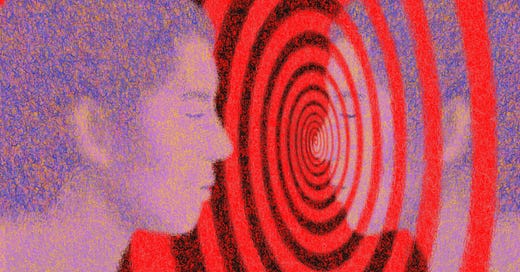Hypnotic Suggestions: How They Shape Perception, Social Conditioning, and Mind Control
Hypnosis is a psychological state of heightened suggestibility where an individual becomes more receptive to external influences. While often associated with stage performances or therapeutic applications, hypnotic suggestion has deeper implications. It affects perception, alters emotions, and even changes behavior. Beyond clinical hypnosis, suggestion plays a significant role in social conditioning and psychological manipulation, often without individuals realizing it. This article explores how hypnotic suggestion works, provides real-world examples, and examines its impact on mind control and social influence.
Understanding Hypnotic Suggestion
Hypnotic suggestion occurs when an individual under hypnosis is given instructions that alter their perceptions, emotions, or thoughts. The mind, in this highly suggestible state, can experience hallucinations, distort sensory input, or accept false realities as true.
Examples of Hypnotic Perception Changes:
Seeing Things That Aren’t There: A hypnotized person can be told they are in a lush garden and subsequently experience the sights, sounds, and smells as though they were real.
Taste Alteration: A common hypnosis experiment involves giving someone an onion while suggesting that it is a sweet apple. Under deep hypnosis, the subject will genuinely taste an apple and be unable to detect the strong bite of the onion.
Pain Elimination: Hypnotic anesthesia is used in medical procedures, where patients can undergo surgery without physical pain when suggested that they feel nothing.
Identity Confusion: A hypnotized subject can be told they are someone else, such as a famous celebrity, and begin acting and responding accordingly.
The Mechanism Behind These Effects
Research in neuroscience has demonstrated that hypnosis can alter brain activity in regions associated with perception and cognition. A study by Kosslyn et al. (2000) found that hypnotized subjects who were told to perceive color in black-and-white images showed increased activation in the color-processing areas of the brain.
Hypnotic Suggestion in Social Conditioning
Social conditioning functions similarly to hypnosis in that repeated exposure to ideas, norms, and expectations can deeply ingrain certain beliefs and behaviors. Just as a hypnotist uses verbal and nonverbal cues to guide perception, societal forces use media, education, and cultural reinforcement to shape public thought.
Examples of Social Hypnosis:
Media Influence: News outlets, advertisements, and entertainment often repeat key phrases and ideas, subtly influencing public opinion. For example, constant exposure to fear-based news can lead to heightened anxiety and social compliance.
Education and Indoctrination: Schools do not just teach knowledge; they instill specific societal values and historical narratives that shape how people perceive their identity and their role in society.
Branding and Consumerism: Advertisers use repetition and emotional triggers to associate products with happiness, status, or security. A strong brand can make people believe they need a specific item for social acceptance.
Cultural Norms: Societal expectations dictate behaviors, such as gender roles or career paths, by subtly reinforcing what is considered "normal" or "desirable."
A study by Bargh & Chartrand (1999) demonstrated that priming—a psychological technique similar to suggestion—can unconsciously influence decisions and behaviors, reinforcing the idea that our actions are often shaped by subconscious cues.
Hypnosis in Mind Control and Psychological Manipulation
Mind control, or coercive persuasion, employs hypnotic-like techniques to reshape beliefs and control behavior. Governments, cults, and extremist groups have used such techniques to exert power over individuals and societies.
Techniques Used in Psychological Manipulation:
Repetition and Mantras: Repeating phrases like "Trust the leader" or "You are special in this group" reinforces beliefs, similar to hypnotic suggestion.
Fear and Reward Cycles: Alternating between punishment and reward creates dependency and increases suggestibility.
Sensory Overload and Deprivation: Bombarding individuals with conflicting information or isolating them from outside perspectives increases susceptibility to implanted beliefs.
Rituals and Symbolism: Ritualistic behaviors reinforce identity shifts and belief structures, commonly used in cult indoctrination.
A real-world example is the MKUltra program, a covert CIA project that experimented with hypnosis, drugs, and psychological manipulation to control subjects. Though the program was shut down, declassified documents reveal attempts to use hypnosis for espionage and coercion (CIA, 1977).
Conclusion: How to Break Free from Hypnotic Influence
While hypnotic suggestion can be beneficial in therapeutic settings, its unrecognized presence in everyday life raises ethical concerns. Awareness is the first step in resisting unconscious influence. Practicing critical thinking, questioning sources of information, and maintaining independent thought help individuals break free from manipulative conditioning. Understanding hypnosis not only empowers personal growth but also provides insight into the hidden forces shaping society and human behavior.
References:
Kosslyn, S. M., Thompson, W. L., Costantini-Ferrando, M. F., Alpert, N. M., & Spiegel, D. (2000). Hypnotic visual illusion alters color processing in the brain. American Journal of Psychiatry.
Bargh, J. A., & Chartrand, T. L. (1999). The unbearable automaticity of being. American Psychologist.
CIA. (1977). Declassified MKUltra Documents. Retrieved from CIA Archives.



